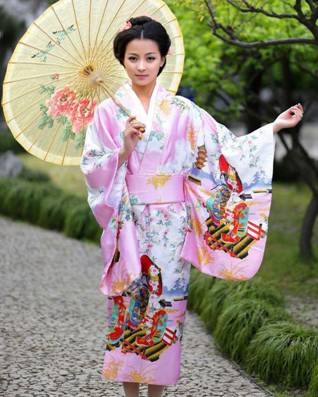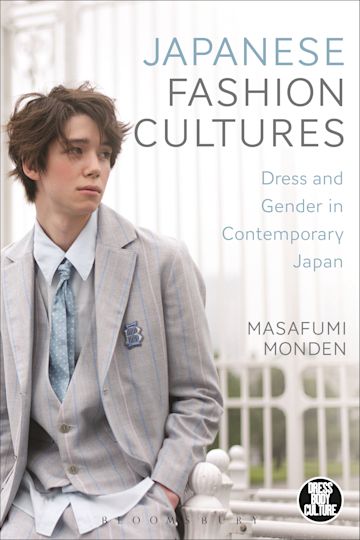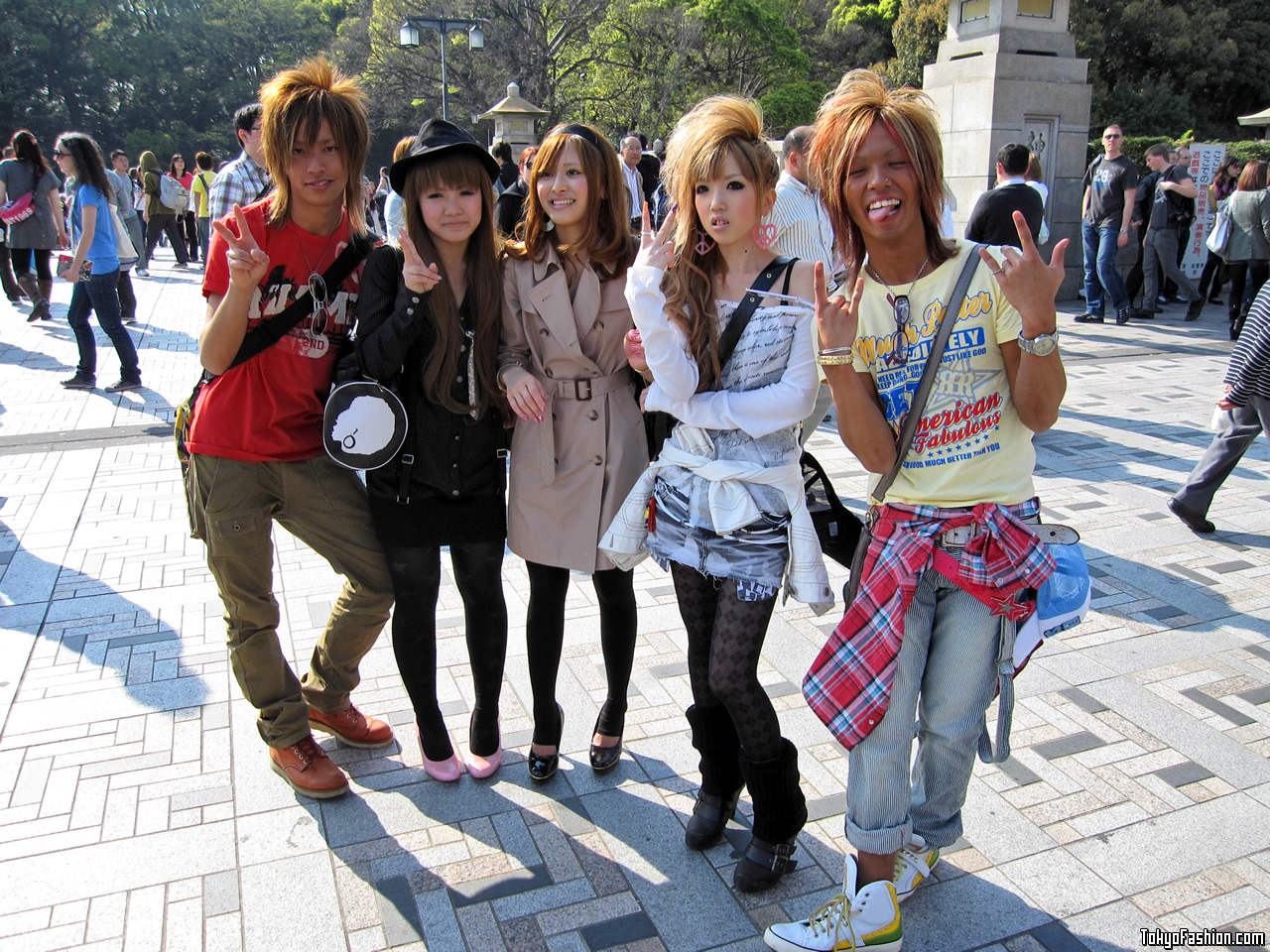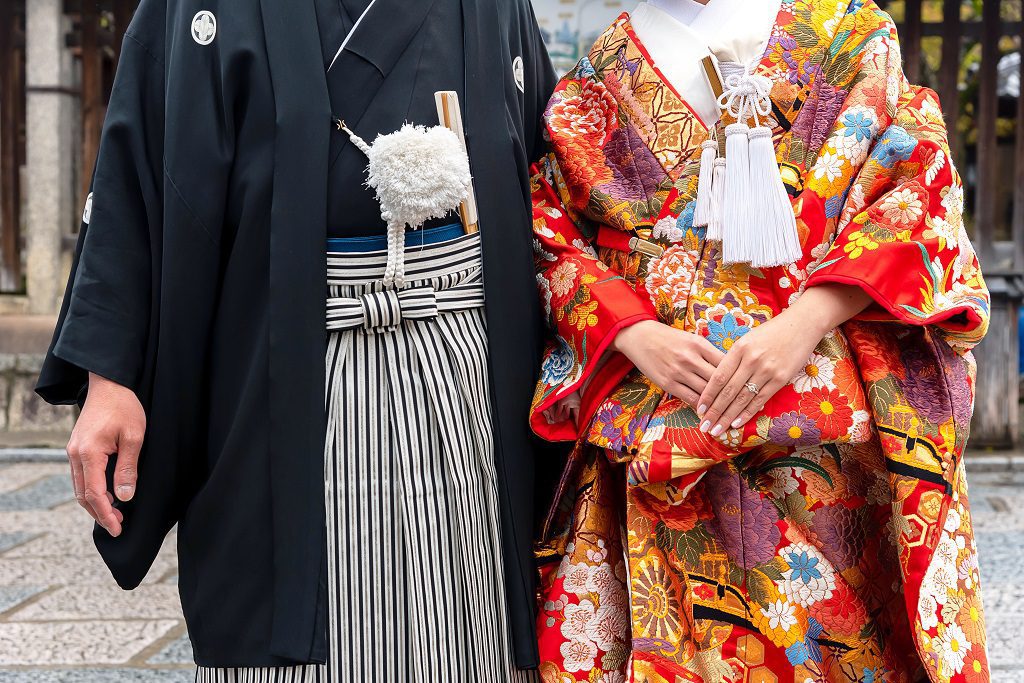Win a Free Trip to Japan!
Experience cherry blossoms and ancient temples
Japanese fashion and culture have profoundly shaped global trends over the years. From the elegant simplicity of traditional garments to the vibrant expression found in streetwear, the evolution of Japanese fashion reflects a rich tapestry of history and innovation. Designers from Japan have gained international acclaim, merging traditional aesthetics with modern sensibilities. Furthermore, Japan’s unique fashion events spotlight emerging talents and celebrate diverse styles, extending their influence beyond borders. As we explore the dynamic interplay between Japanese fashion and culture, we uncover its lasting impact on the world stage.
Historical Overview of Japanese Fashion
Japanese fashion and culture represent a rich tapestry woven through centuries of history. Originally, clothing styles in Japan mirrored the country’s social structure, climate, and available materials. Key milestones in this historical journey include:
- Heian Period (794-1185): The imperial court favored layered garments known as jūnihitoe, which showcased exquisite silk and vibrant colors. The aesthetic emphasized elegance and complexity.
- Edo Period (1603-1868): This era welcomed the iconic kimono, which became a symbol of Japanese identity. Patterns and colors often reflected seasonal changes and festivities, highlighting the connection between clothing and cultural nuances.
- Meiji Restoration (1868): Japan opened up to Western influences, leading to a blend of traditional and modern styles. The introduction of Western attire altered the fashion landscape significantly.
- Post-War Period (1945-1960s): Urbanization and industrialization brought about the rise of youth-led street fashions, creating distinctive subcultures that dramatically changed Japanese fashion.
- Contemporary Era: Today, Japanese fashion and culture are celebrated globally, influencing designers and trends across the world. Iconic styles reveal a blend of tradition and modernity, evident in both haute couture and everyday streetwear.
This historical overview of Japanese fashion demonstrates how deeply intertwined it is with the nation’s culture, reflecting individual identity, societal values, and artistic expression through the ages.

Key Elements of Traditional Japanese Clothing
Traditional Japanese clothing reflects rich history and diverse cultural influences. When exploring these garments, several distinct elements emerge, each contributing to the essence of Japanese fashion and culture.
-
Kimono:
- The most iconic garment, characterized by its long sleeves and intricate designs.
- Crafted using silk, cotton, or synthetic fabrics, the kimono varies in style depending on the wearer’s age and the occasion.
-
Obi:
- A wide belt that secures the kimono; it often features elaborate patterns and colors.
- Different types of obi are used for informal and formal occasions, showcasing the versatility of Japanese fashion and culture.
-
Hakama:
- A pleated, skirt-like garment worn over the kimono, commonly seen in traditional ceremonies.
- Reflects the formality of Japanese attire and can be worn by both men and women.
-
Jinbei and Yukata:
- Casual summer garments; jinbei consist of a top and shorts, while yukata are lightweight cotton kimonos.
- These emphasize comfort and tradition during festivals and informal gatherings.
-
Geta and Zori:
- Traditional footwear that complements the clothing. Geta are raised wooden sandals, while zori are flat sandals made of rice straw or synthetic materials.
- They demonstrate how traditional clothing influences Japanese fashion and culture.
Combined, these elements showcase the functionality and beauty of traditional Japanese attire, serving as a testament to the nation’s artistic heritage and societal values.
Influence of Street Fashion in Japan
Japanese street fashion represents a vibrant mix of creativity and self-expression, significantly influencing global fashion trends. Emerging from districts like Harajuku and Shibuya, this unique style showcases dynamic subcultures and diversity. Key aspects include:
- Bold Colors and Patterns: Street fashion in Japan often features eye-catching colors and intricate patterns, enabling individuals to express their unique identities.
- Layering Techniques: The art of layering garments is prevalent, allowing wearers to combine different textures and styles, producing visually striking outfits.
- Mix of Styles: Japanese Fashion and Culture embraces various subcultures, such as Lolita, Gyaru, and Punk, which continually inspire designers worldwide.
The influence of Japanese street fashion extends beyond its borders. It has sparked global trends characterized by:
| Feature | Japanese Street Fashion | Global Street Fashion |
|---|---|---|
| Use of Accessories | Unique and statement-making | Minimalist or functional |
| Approach to Gender Norms | Fluid and experimental | Generally more traditional |
| Emphasis on Individuality | Highly original and diverse | Often follows mainstream trends |
Moreover, social media platforms, like Instagram and TikTok, contribute to the rapid dissemination of these styles globally. Consequently, as more people embrace the essence of Japanese Fashion and Culture, the lines between fashion capitals blur, creating an eclectic mix of styles that celebrate individuality and creativity.
Impact of Japanese Designers on Global Fashion
Japanese designers have significantly influenced global fashion, marrying traditional aesthetics with modern sensibilities. They introduced innovative techniques and daring concepts that have reshaped the industry’s landscape. Here are some key aspects of their impact:
- Avant-Garde Designs: Designers like Rei Kawakubo and Yohji Yamamoto broke conventional boundaries. Their work often emphasizes asymmetry and deconstruction, challenging norms of beauty and wearability.
- Cultural Fusion: Many Japanese designers integrate elements from their culture into their creations. This results in unique, hybrid styles that resonate with international audiences. For example, traditional kimonos inspire contemporary collections, showcasing the rich heritage of Japanese Fashion and Culture.
- Sustainable Practices: Some designers are at the forefront of sustainability, promoting ethical manufacturing and eco-friendly materials. Their initiatives encourage global brands to adopt similar practices, influencing wider industry standards.
- Global Recognition: Events such as Paris Fashion Week have spotlighted Japanese talent, leading to a growing appreciation for their creativity. This recognition has paved the way for cross-cultural collaborations, enriching the global fashion narrative.
Comparison Table: Japanese Designers vs. Western Designers
| Aspect | Japanese Designers | Western Designers |
|---|---|---|
| Approach | Deconstruction & Avant-Garde | Classic & Trend-Focused |
| Cultural Integration | Strong ties to local heritage | Often looks abroad for inspiration |
| Sustainability | Prominent focus | Increasingly relevant |
| Global Reach | Rapidly growing | Established brands |
In summary, Japanese designers have transformed Japanese Fashion and Culture into a global phenomenon by redefining style, promoting sustainability, and fostering cross-cultural dialogue.

Role of Fashion Events in Promoting Japanese Style
Fashion events play a pivotal role in showcasing and promoting Japanese Fashion and Culture both locally and globally. These events serve not only as a platform for designers but also as a vehicle for cultural exchange, inspiring fashion enthusiasts and industry insiders alike. Here are some key aspects of how these events contribute to the global fashion landscape:
- Cultural Showcases: Events like Tokyo Fashion Week highlight traditional aesthetics alongside contemporary innovations, drawing attention to the unique juxtaposition of Japan’s rich history and modern style.
- Networking Opportunities: Fashion shows attract international media, buyers, and influencers, thereby facilitating collaborations and partnerships that help Japanese designers reach wider audiences.
- Trend Setting: Japanese fashion events often set trends that resonate worldwide. For instance, the emergence of Harajuku culture in street fashion has inspired countless global iterations.
- Diversity in Presentation: From avant-garde presentations to traditional kimono displays, fashion events in Japan celebrate diversity, offering a comprehensive view of Japanese Fashion and Culture.
| Fashion Event | Key Features | Global Impact |
|---|---|---|
| Tokyo Fashion Week | Mix of traditional and modern styles | Launchpad for emerging designers |
| Japan Fashion Week in Paris | International spotlight on Japanese craftsmanship | Highlights sustainability efforts |
In conclusion, fashion events undeniably influence the perception and dissemination of Japanese Fashion and Culture, making them essential in the global fashion realm.
The Rise of Harajuku Culture
Harajuku culture represents a vibrant fusion of fashion, art, and youth expression that has captivated the global imagination. This unique style emerged from the Harajuku district in Tokyo, where creative individuals showcase their fashion statements through vivid colors, playful designs, and an emphasis on individuality.
Key Characteristics of Harajuku Culture:
- Eclectic Fashion: Harajuku embraces a mix of styles, from gothic and punk to lolita and kawaii, allowing for personal expression.
- Bold Colors and Patterns: Bright hues and daring patterns dominate the scene, reflecting the playful spirit of Japanese youth.
-
Influence of Subcultures: Various subcultures play a significant role in shaping Harajuku fashion, including:
- Gyaru: Focuses on glamour and femininity.
- Visual Kei: Characterized by androgynous looks and elaborate makeup.
- Decora: Known for its excessive layering of accessories and bright, clashing colors.
Global Impact of Harajuku Culture:
The impact of Harajuku culture on Japanese fashion and culture can be seen worldwide. Notable points include:
- Media Representation: Fashion magazines, TV shows, and social media platforms promote Harajuku styles, influencing global fashion trends.
- Fashion Events: International showcases often highlight the unique aesthetics of Harajuku culture, making it a point of reference in discussions about Japanese fashion and culture.
In summary, the rise of Harajuku culture illustrates how Japanese fashion and culture have become a significant source of inspiration, encouraging global audiences to embrace individuality and creativity in their styles.
Japanese Fashion in Popular Media
Japanese Fashion and Culture have dramatically influenced global media, capturing the hearts of audiences worldwide. From anime to Hollywood films, fashion reflects the country’s unique aesthetic and cultural narratives. Here’s how it manifests in various media:
-
Anime and Manga: These visual mediums showcase distinctive styles that resonate globally. Characters often sport vibrant outfits that spotlight elements of traditional attire, such as kimono-like designs and vibrant patterns. Notable examples include:
- Sailor Moon’s schoolgirl uniforms and elaborate transformation outfits.
- Attack on Titan’s military-inspired aesthetic that fuses practicality with style.
-
Films: Directors like Takashi Miike and Hiroshi Takahashi incorporate fashion as a narrative tool. Examples include:
- The stunning costume designs in The Last Emperor reflect a blend of historical garments and modern twists.
- Lost in Translation effectively showcases Tokyo’s contemporary fashion scene through character wardrobes.
-
Television: Shows like Terrace House and Nigeru wa Haji da ga Yaku ni Tatsu bring youthful Japanese street fashion to a wider audience, spotlighting:
- Emerging designers’ work.
- Eclectic blends of modern styles and cultural heritage.
-
Social Media: Platforms such as Instagram and TikTok have bolstered the popularity of #JapaneseFashion in global trends. Fashion influencers from Japan use these channels to:
- Share unique outfits inspired by both traditional and contemporary styles.
- Promote modern adaptations of classic motifs.
In summary, Japanese Fashion and Culture thrive in popular media, offering a refreshing perspective and continually shaping global fashion trends.

Sustainable Practices in Japanese Fashion
Japanese fashion has increasingly embraced sustainability, reflecting a deep-seated respect for nature and community. As a result, many designers and brands have adopted practices that minimize environmental impact while promoting cultural heritage. Here are some key sustainable practices in Japanese fashion:
- Traditional Techniques: Many brands utilize age-old methods, such as indigo dyeing and textile weaving, which not only preserve art forms but also reduce reliance on synthetic materials.
- Local Sourcing: By sourcing materials locally, Japanese designers support local economies and decrease carbon footprints. This method integrates the Japanese Fashion and Culture ethos of harmony with nature.
- Upcycling and Recycling: Numerous Japanese fashion labels focus on upcycling discarded fabrics and garments. This approach not only prevents waste but also gives a new life to items, merging creativity with sustainability.
- Minimalism: Japanese fashion emphasizes minimalism, where less is often more. This philosophy encourages consumers to invest in fewer, high-quality pieces, aligning with sustainable consumerism.
Comparison of Sustainable Practices
| Practice | Traditional Techniques | Local Sourcing | Upcycling/Recycling | Minimalism |
|---|---|---|---|---|
| Environmental Impact | Low | Moderate | Low | Low |
| Cultural Preservation | High | Moderate | Moderate | Moderate |
| Consumer Engagement | Moderate | High | High | High |
In summary, Japanese Fashion and Culture promote sustainable practices that resonate worldwide, inspiring a more eco-conscious approach to fashion. Through these methods, Japan not only enhances its rich traditions but also sets a global precedent for sustainability in the fashion industry.
Fusion of Western and Japanese Fashion Trends
The fusion of Western and Japanese fashion trends has created a vibrant and dynamic landscape that captivates fashion enthusiasts worldwide. This integration reflects a unique blend of aesthetics, functionality, and cultural significance, demonstrating the strength of Japanese Fashion and Culture in the global market.
Key Aspects of Fusion
- Cultural Exchange: Both cultures share influences, leading to innovative designs that incorporate elements from each. For example, designers often merge traditional kimono fabrics with contemporary Western silhouettes.
- Street Style Influence: Renowned for its boldness, Japanese street style inspires Western brands. Concepts like layering and contrasting patterns from Harajuku are adopted globally.
- Designer Collaborations: High-profile collaborations, such as between Western brands and Japanese designers, bridge gaps, further promoting Japanese Fashion and Culture. Notable partnerships include Comme des Garçons with American brands, creating a dialogue between the East and the West.
Comparison Table: Elements of Fusion
| Element | Japanese Fashion | Western Fashion |
|---|---|---|
| Patterns | Vibrant prints and floral motifs | Minimalist patterns, often monochrome |
| Silhouettes | Layered, oversized, and asymmetrical | Tailored fits and structured shapes |
| Fabrics | Lightweight materials and unique textures | Denim, cotton, wool, and synthetic blends |
| Accessories | Elaborate hairpieces and unique bags | Statement jewelry and practical belts |
In conclusion, the harmonious fusion of Japanese Fashion and Culture with Western trends continues to evolve, enriching the global fashion scene and showcasing the creativity and versatility found at this intersection. As we look ahead, this blend promises to reshape future styles, reflecting a world that embraces diversity and intercultural dialogue.
Future Directions for Japanese Fashion Worldwide
The future of Japanese fashion and culture is poised for exciting transformations, as it continues to evolve and influence global trends. Here are several key directions we can anticipate:
- Sustainable Practices: As the world increasingly prioritizes eco-friendliness, Japanese designers embrace sustainable materials and ethical production methods. Consumers in Japan and abroad now prefer brands that demonstrate environmental responsibility.
- Technology Integration: Innovations in technology, such as augmented reality (AR) and smart textiles, promise to reshape the fashion landscape. Japanese fashion and culture are embracing tech-savvy fashion that merges digital and physical experiences.
- Cultural Hybridity: The fusion of Western styles with traditional Japanese elements is on the rise, creating unique fashion statements. This blend allows for creativity and diversity, reflecting a globalized culture while preserving heritage.
- Revival of Traditional Techniques: There’s a growing appreciation for traditional craftsmanship, such as kimono making and indigo dyeing. This revival helps sustain cultural identity while appealing to modern aesthetics.
- Diverse Representation: The push for inclusivity is gaining momentum, with a focus on diverse body types and gender-neutral fashion. Japanese fashion and culture are likely to continue promoting a broader representation in design.
With these evolving trends, Japanese fashion and culture will not only maintain its relevance but also inspire future generations of designers and enthusiasts worldwide.
Frequently Asked Questions
How has Japanese fashion influenced global trends?
Japanese fashion has profoundly influenced global trends by introducing unique aesthetics and innovative design concepts. This influence is seen not just in high fashion but in street style as well, with designers like Issey Miyake and Yohji Yamamoto popularizing avant-garde silhouettes and layering techniques. Additionally, the rise of Harajuku culture has contributed to a colorful and playful approach to fashion worldwide, inspiring designers and brands to experiment with prints, textures, and styles that reflect a blend of traditional and contemporary elements.
What role do cultural elements play in Japanese fashion?
Cultural elements play a significant role in Japanese fashion, as many designs draw inspiration from traditional garments such as kimonos and yukatas. These garments are often reimagined and adapted into modern styles, which reflect Japan’s rich cultural heritage. Additionally, elements such as symbolism in patterns and colors, as well as seasonal influences, are all integrated into the design process. This melding of the ancient and modern not only preserves cultural identity but also showcases it on a global stage, influencing how fashion is perceived and appreciated worldwide.
Can you explain the significance of street fashion in Japan?
Street fashion in Japan is not just a trend; it is a vibrant expression of individuality and creativity that has gained international acclaim. Areas like Harajuku have emerged as cultural epicenters where young people showcase unique styles, often blending various fashion influences, subcultures, and art. This dynamic environment encourages self-expression and challenges societal norms, making it a crucial aspect of Japanese identity. The impact of this street fashion is evident globally, as it influences designers and brands who seek to capture the spirit of personal style and diversity.
How do Japanese designers balance tradition and modernity in their collections?
Japanese designers excel at balancing tradition and modernity by seamlessly integrating traditional aesthetics, techniques, and craftsmanship into contemporary designs. Many designers respect the heritage of artisan skills, such as fabric dyeing and weaving, while embracing innovative technology and modern silhouettes. This ability to merge the old with the new allows for a distinctive narrative in collections that resonate with both local and international audiences, often appearing at fashion weeks across the globe. This balance not only celebrates cultural roots but also pushes forward the boundaries of fashion creativity.
What impact has anime and pop culture had on fashion in Japan?
Anime and pop culture have left a remarkable imprint on fashion in Japan, creating a distinctive genre that intertwines visual art and clothing design. Characters from popular anime series frequently inspire fashion trends, leading to the emergence of cosplay culture, where fans dress as their favorite characters. This phenomenon has fostered a playful approach to fashion, encouraging experimentation and bold expressions of identity. Additionally, fashion designers often draw inspiration from anime aesthetics, leading to unique collections that resonate with younger generations and global audiences alike, thereby solidifying Japan’s status as a fashion-forward nation.
